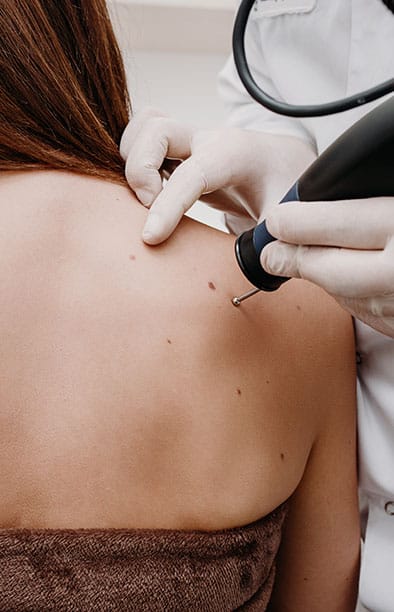What is Mole Removal?
Mole removal is an effective way to completely remove unwanted or suspicious looking moles. This procedure can be done on any part of the body and remove any type of mole.
This doctor was great. He let me tell him the whole story of what was going on and was able to tell me exactly what the problem was even though a couple of other doctors had told me something different. He was absolutely right and was very pleasant and personable and I would definitely go back and recommend him to other people seeking a dermatologist. As someone who works at a hospital and works with a lot of doctors, he is one of the greats.”
Who is a Good Candidate?
Individuals with a changing or bothersome mole can benefit from mole removal. It is important to keep an eye on all of your moles, as there are signs that a mole could be cancerous. These signs are often called the “ABCDEs” of melanoma skin cancer, and include:
- Asymmetry- one-half of the mole is different from the other half.
- Border irregularity- edges of the mole are blurred or ragged.
- Color- the color of the mole is not uniform or contains multiple colors.
- Diameter- the size of the mole is larger than 6mm.
- Evolution- the mole has changed in shape, surface, or color over time.
If you are experiencing any of these symptoms in a mole, make an appointment with your dermatologist for a full evaluation.
How is Treatment Done?
Mole removal can be done using a shave biopsy or excision biopsy. During a shave biopsy, a scalpel is used to shave off the mole. There are no stitches required with a shave biopsy. During an excision biopsy, a scalpel is used to cut the border surround the mole. The mole is removed, and stitches are placed. If the mole is suspected to be cancerous, it will be tested in a lab to be sure that all of the affected tissue has been removed.
Mole Removal Recovery
Following mole removal, petroleum jelly should be applied to the wound and a bandage should be placed. Treated areas should be cleaned once or twice a day to combat infection. Dr. Baird will supply you with specific post-op instructions to ensure a safe recovery. Scabbing may occur for one to two weeks, and any sutures can be removed one to two weeks following the procedure.
If you are experiencing changes in a mole or believe that a mole may be cancerous, contact our Farmington Hills office today. We will get you in for an appointment with Dr. Baird as soon as possible to evaluate your situation.


